You’ve probably heard an enormous amount about climate change (and believe the facts or not), but we’re here to educate you further. What cannot be disputed is the uptick of natural disasters that have plagued every corner of our world.
The impact they’ve had on our planet, although difficult to put into words, is something we must talk about. As dismal as our reality may seem, there are many activists who are battling the problem, and we highlight their efforts as well.
The numbers and details can be overwhelming, so we’ll break down global warming and climate change for you. Simplified information can often educate more than anything.
If you need the extra boost or if you are an activist, this article should be a catalyst for even more action. So join us as we strive to give you world issues that are happening. Right now.
Top 9 Most Astonishing Climate Change Facts
1. The earth is almost 1.1°C warmer than it was in the 1800s (UNO)
2. In the early 2040s, the earth is likely to reach a 1.5-degree Celsius warming limit (IPCC)
4. Deforestation contributes to around 20% of human-caused global greenhouse gas emissions
6. Worldwide almost 304 billion work hours were lost due to heatwave in 2019 (The Lancet)
7. Wildlife populations have experienced a 69% decline in the last four decades (WWF)
8. The incidence of mosquito-borne diseases has increased due to global warming (Nasa.gov)
9. Essential half of emission reductions by 2030 to preserve 1.5°C Goal (UNO)
Climate Change Reality
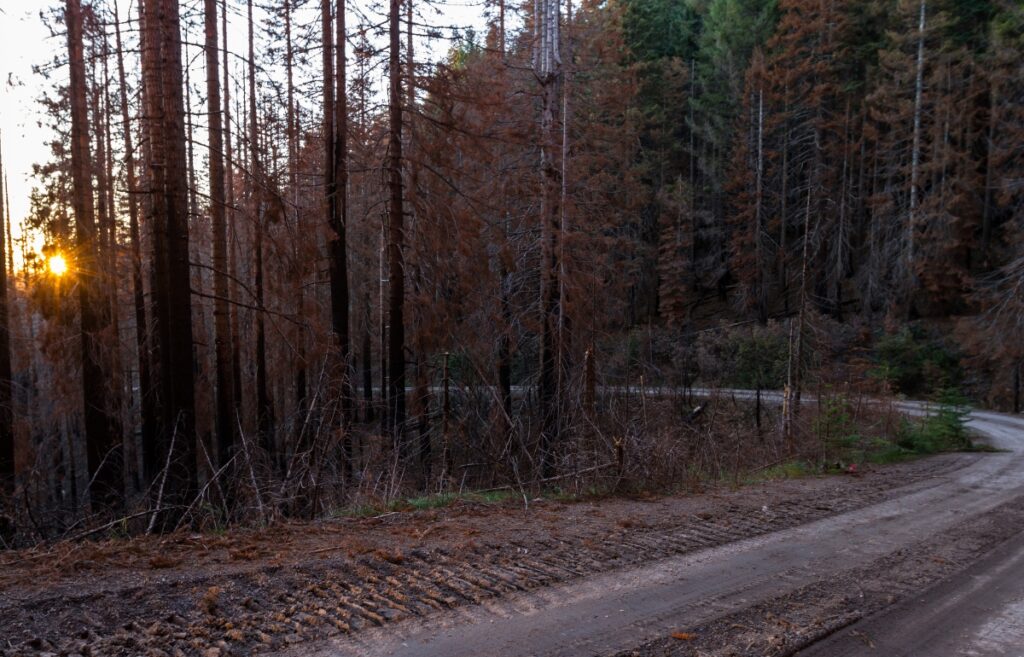
Greenhouse gases. Fossil fuels. Global warming. Climate change. It can sound pretty complicated, and well, it can be. But if we get down to basics, things will become more clear.
Greenhouse gases (also called “GHGs”) – Think of greenhouse gases as the walls of a greenhouse, hence the name, that trap heat for the Earth.
As the sun shines throughout the day, it warms the earth’s surface. At night, the earth releases heat back into the air while the surface cools. Greenhouse gases catch that heat for Earth’s benefit. This is a natural process that protects life from the earth becoming too cold. It should keep the global temperature at an average of 14 degrees Celcius (57 degrees Fahrenheit).
Human activities – from automobiles, industries, etc. – have greatly affected this process in the past century by adding too many gases into the atmosphere, which are being trapped.
Fossil fuels – Fossil fuels, like coal, natural gas, and oil, are created from decomposing plants and animals within the earth. Carbon and Hydrogen are released and are burned for energy for homes, businesses, autos, and factories.
Human activities are sucking down what is a nonrenewable resource. And burning these fuels isn’t clean or healthy for the environment.
Non-renewable energy sources – 4 major types: Oil, coal, natural gas, nuclear energy
Global warming – (This term isn’t interchangeable with ‘climate change.’) Global warming, due to fossil fuel burning, is the long-term heating of the Earth’s surface. It has primarily been observed since the pre-industrial period or between 1850-1900.
Climate change – Climate change is a long-term change in the average weather patterns that have come to define Earth’s local, regional, and global climates. – www.climate.nasa.gov
The White House Office of Domestic Climate Policy (Climate Policy Office), climate experts, NASA scientists, and many more who are in the know discovered and are working on climate change.
Now let’s continue…
Climate Change
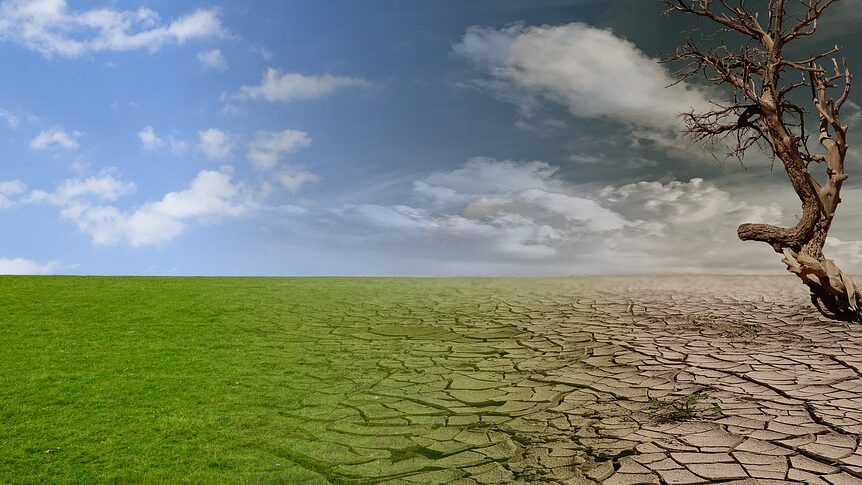
Amidst a rapidly changing world, understanding the intricate web of climate change is paramount for safeguarding our planet’s future:
Why is Climate Change Bad
As the global average temperature steadily gets warmer, global warming continues and causes weather worldwide to be greatly impacted, such as:
- Continued strain on human beings’ livelihoods and health
- Wildlife struggles to survive due to extreme weather events.
- Increased precipitation which produces major flooding and more tropical storms
- Drought
- Wildfires are destroying entire forests and towns.
- Melting glaciers
- Oceans are buckling
- Increasing greenhouse gas pollution
- Increasing sea surface temperatures
- Sea level rise
- Increased carbon absorption causes seawater to have increased acidity and ocean deoxygenation causing sea life to struggle to exist.
“Domino effect” is putting it mildly.
Rate of Climate Change in the Mid-20th Century
From 1900-1995, severe drought across global land areas had relatively small increases in activity. Temperatures had leveled off, and greenhouse gases accumulated slowly. Aerosols, or tiny floating particles that harm humans and the environment, did increase.
These are generated by factories, vehicles, and power plants and increased from the rapid economic growth after WWII. (NASA Earth Observatory)
Examples of Climate Change
- Earth is losing 1.2 TRILLION tons of ice yearly, meaning wildlife, especially polar bears, are struggling to survive.
- In the Summer of 2022, Europe was hit by their worst drought in 500 years.
- The Atlantic hurricane season of 2022 was especially brutal.
- Tropical storms, such as Freddy in West Africa, were the longest events they’ve ever been.
- In 2022, Pakistan was hit by Mother Nature’s most intense flooding in recorded history.
What Causes Climate Change
Let’s delve into the hidden forces behind Earth’s shifting climate, where intricate interactions create the phenomenon we know as human-caused climate change:
Burning of Fossil Fuels
In the last 20 years, 65% of fossil fuel emissions have been from human activities. This overconsumption threatens our fuel source and environment.
Deforestation and Agriculture
Deforestation and agriculture contribute to global warming. When forests are cut down, carbon from trees is released into the atmosphere as carbon dioxide (CO2).
Alteration of Land Usage
This phrase is used in international climate policy and is when agricultural companies deforest or raze an area of land for purposes other than to be a part of the natural terrain. Ex: Turning a field into grazing land for animals that are going to be slaughtered.
Forest Fires
The recent catastrophic forest fires in Australia, from 10/19 to 02/20, killed 34 people. As of 08/11/23, the island of Maui in Hawaii is experiencing wildfires that have killed 80 people so far. Much of Maui has been destroyed.
Canadian wildfire officials said the 2023 wildfire season is easily the worst ever recorded, having already destroyed millions of hectares (about 2.47 acres).
There are currently wildfires ongoing in California.
Effects of Climate Change
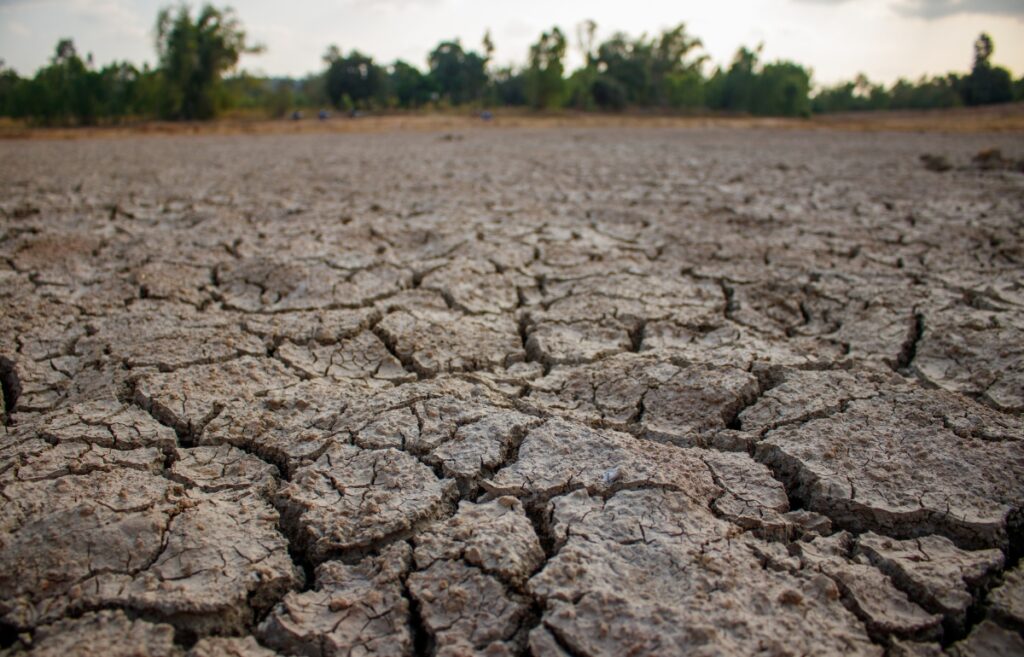
As the symphony of nature is disrupted, the effects of climate change reverberate across ecosystems, reshaping the world we thought we knew:
Regional Effects in the US
Human health, agriculture, and ecosystems have all been affected by climate change in these regions.
- Northeast – Higher temperatures and energy demand, decreased air quality, strains on energy facilities
- Northwest – Extreme events like droughts, floods, wildfires, and heat waves are occurring more often.
- Southeast – Sea levels are rising, threatening coastal populations and ecosystems, and more intense hurricanes and storm surges are occurring more often.
- Southwest – Increased heat, drought, wildfires, insect outbreaks, flooding, and erosion in coastal areas are all increasing. Human health is declining.
- Midwest –There are warmer and wetter winters, heavier precipitation in the Spring, and hotter summers with longer dry periods.
- Southwest – Increased heat, drought, flooding and erosion in coastal areas, wildfires, and insect outbreaks. Declining water supplies reduced agricultural yields and human health impacts in cities due to heat.
Climate Change Statistics
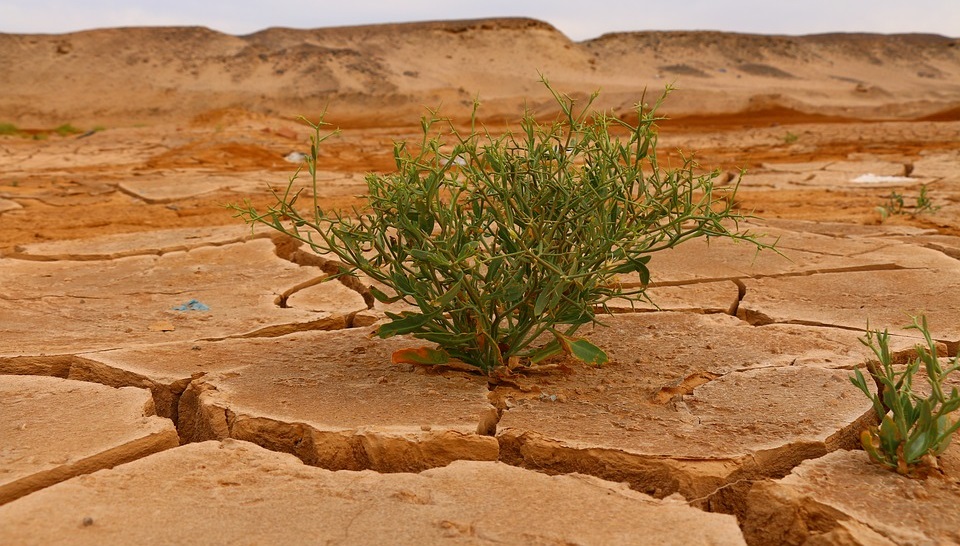
Since the 1970s, Human Activity’s Role in Climate Warming Has Moved from Theory to Established Fact. (IPCC)
This is since scientific assessments first started in the 1970s. Scientists haven’t pulled this fact out of a rabbit’s hat. It’s real. (source)
Human-caused CO2 Rise Is Outpacing Post-ice Age Natural Levels by 250 Times. (IPCC Assessment Report)
In the last 150 years, CO2 levels in Earth’s atmosphere have increased from 280 parts per million (ppm) to 414 ppm. One ppm of CO2 = for every 1 million air molecules you breathe in, one would be CO2.
In the Early 2040s, Earth Is Likely to Reach a 1.5-degree Celsius Warming Limit. (IPCC)

From 2006–2015, warming reached 0.87°C, largely due to human activity. It’s increasingly apparent that it’s due to us that our world is burning up.
The Current CO2 Emissions May Lead to a Temperature Increase of up to 4.4°C by the End of the Century. (IPCC)
Even with rapid and sustained reductions in greenhouse gas emissions, global warming wouldn’t slow down until around two decades. We can’t just slowly dip our toes in the water to improve the situation. The situation requires immediate action. (source)
Unprecedented Warming Rate in 10,000 Years Despite Historical Climate Shifts (Climate.gov)
The ten warmest years recorded since global records began in 1880 are 2014-2023. It’s getting hotter. Rapidly. (source)
China, US, and India Are the Three Major Contributors of Greenhouse Gas Emissions. (Our World in Data)

In 2023, China, the United States, and India contributed 42.6% of total emissions. The bottom 100 countries account for only 2.9%. This is a top-three list no one should want to be in. (source)
At mid-year 2023, China’s population is almost 1.5 billion people. The United States has almost 400 million people. These facts should be troubling, concerning, and disturbing enough to want to take action (personal responsibility) against climate change.
A Study Conducted in 2019 Revealed That the Oceans Absorbed 90% of the Planet’s Accumulated Heat from 1971 to 2010. (Climateaction.Org)
This stat is due to the effects of greenhouse gases. Coral bleaching, when coral turns completely white due to stress, is a negative reaction from oceans that are getting abnormally warm. (source)
Worldwide Almost 304 Billion Work Hours Were Lost Due to Heatwave in 2019. (The Lancet)

In 2021, there were potentially 470 billion work hours lost globally. We don’t often hear facts like this, but it doesn’t make them less devastating to the world. (source)
By Mid-century, the Current Climate Change Scenario Could Wipe off 18% of the Global GDP. (World Economic Forum)
The economic losses that are due to the havoc that climate change creates are undeniable. Entire countries suffer, and it’s often “invisible” since unless the average person is looking for it, it’s difficult to notice that its financial impacts are extraordinary. (source)
Wildlife Populations Have Experienced a 69% Decline in the Last Four Decades. (WWF)
Latin America and the Caribbean’s wildlife have been hit the hardest. Climate change impacts wildlife habitats and food and water, which has a tremendous impact on human life. (source)
Global Warming
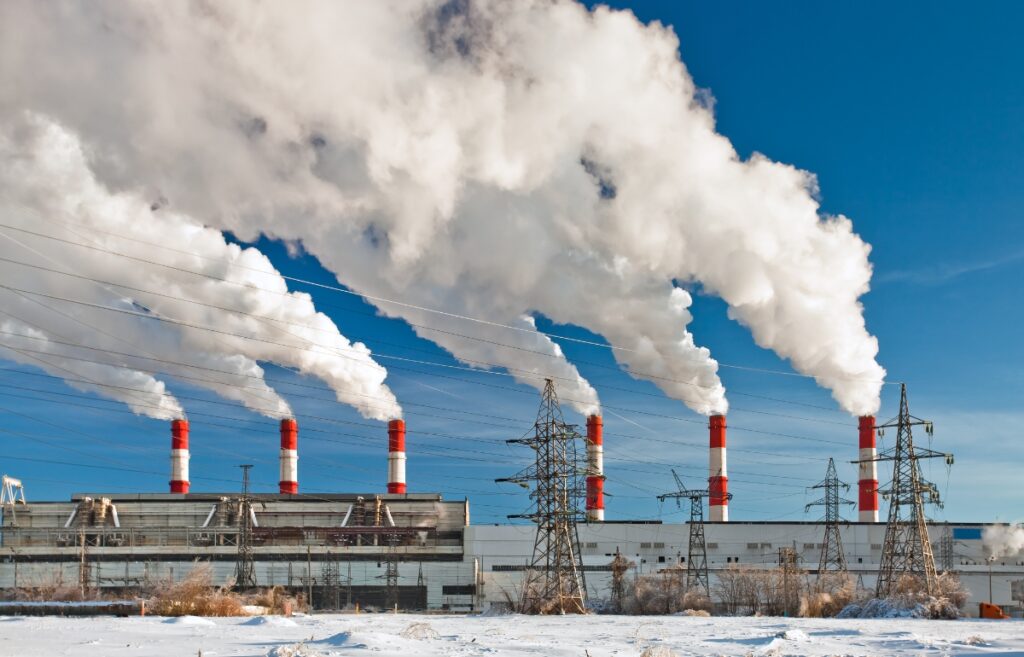
Now let’s step into the warming heart of our planet’s story, where the rising temperature casts a profound impact on the delicate balance of life:
Effects of global warming
The Earth Is Almost 1.1°C Warmer than It Was in the 1800s. (UNO)
According to NASA scientists, this causes extremely cold winters in one area of the world and extremely warm winters in another. (source)
Annually 1.2 Trillion Tons of Ice Is Getting Lost. (MIT)
And this travesty was in the 2010s. Ice is turning into water using 3% of the extra energy in the earth. (source)
According to NOAA, 2022 Was the Sixth-warmest Year on Record, with Global Temperatures of 1.55°F. (NOAA)
The Arctic is warming faster than other areas, and land is warming faster than the oceans. And there’s no end in sight without quick and extreme combat with climate change. (source)
Annually Global Sea Levels Are Rising By 0.13 Inches (Nasa.gov)
This is a 30% rise from when NASA measured it in 1992. This may seem like a small amount, but when you’re dealing with such large expanses of water, it’s not! (source)
Incidence of Mosquito-borne Diseases Has Increased Due to Global Warming (Nasa.gov)
Extreme weather events have made conditions for mosquitos ideal for them to migrate to higher altitudes. And these pests carry more than malaria and West Nile virus.
Scientists Agreement on Climate Change
In a chorus of consensus, scientists globally unite in their resounding agreement: climate change is an urgent reality demanding collective action.
Here are the key scientific consensus points:
- Earth’s climate warmed since the late 1800s.
- People, mainly through greenhouse gas emissions, caused this.
- Continuing emissions worsen global impacts.
- We can act to slow warming and brace for changes.
NASA climate change
NASA uses scientific instruments and has some of the best scientists in the world. They measure ice cores, tree rings, rocks, and more to come to their conclusions about climate change.
NASA’s research also extends to satellite observations, which provide a unique vantage point to monitor various aspects of climate change. Their commitment to rigorous research contributes significantly to the global effort to comprehend, mitigate, and address the complex dynamics of climate change.
Facts About Climate Change
July 2023 Saw the Highest Global Temperatures Ever Recorded for a Single Month. (European Union’s Copernicus Climate Change Service)
No scare tactics here. Only warnings. The earth’s temperature has changed throughout history, but the situation we’re living in now is much more dire than it has been for 10,000 years. (source)
As of May 2022, the Level of Carbon Dioxide (CO2) in the Atmosphere Is at Its Highest Point in Human History. (NOAA.gov)
This should be frightening, wave numerous red flags, and be a high-alert warning. Now, carbon dioxide levels are more than 50% higher than before the industrial era.
Deforestation Contributes to Around 20% of Human-caused Global Greenhouse Gas Emissions. (LSE)
Land use change and deforestation are the result of greed and overabundant “wants.” Some tropical forests now emit more carbon than they take in due to deforestation practices. (source)
Approximately 3.6 Billion Individuals Reside in Regions Highly Susceptible to the Effects of Climate Change (IPCC.ch)
Underdeveloped societies, due to marginalization and inequity, are top contenders to be affected by climate change more so than other regions. Poor patterns of socio-economic development aren’t conducive to being able to combat climate change.
In One Square Mile, Mangroves Store Carbon Equal to 90,000 Cars’ Annual Emissions (Conservation International)
As crucial carbon sinks, mangroves not only safeguard our planet’s health but also provide habitats for diverse marine life, act as coastal buffers against storms, and support the livelihoods of countless communities. (source)
Climate Change Activism
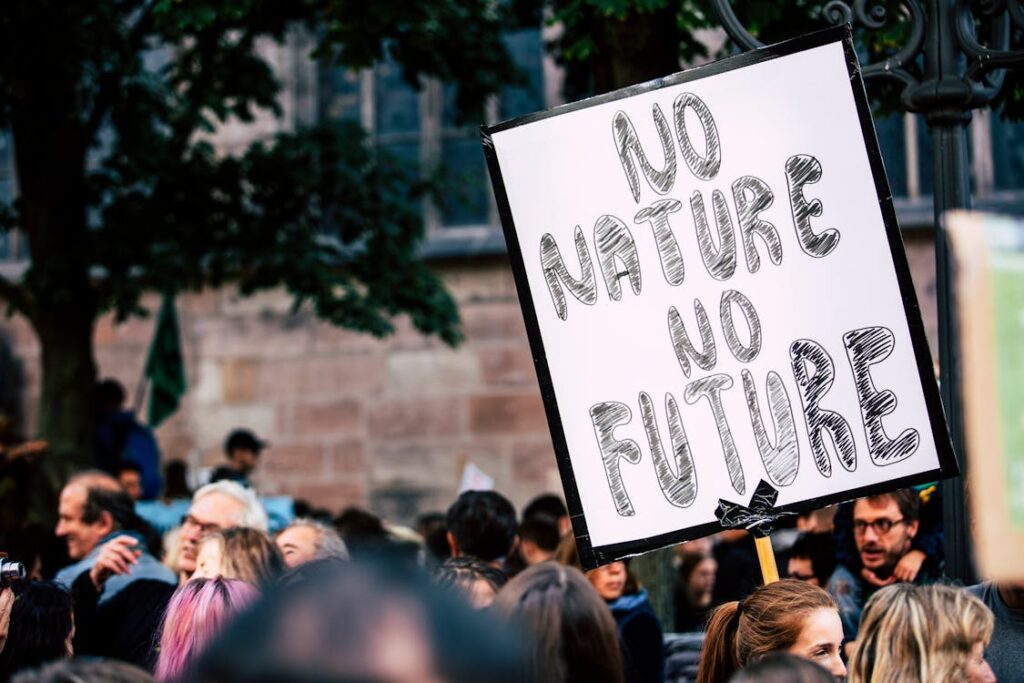
There are incredible activists who not only know of the climate change emergency but are doing something about it:
VERGE 23, a climate tech event, welcomes leaders from various sectors to pick each others’ brains on climate change.
In 2021, the #ClimateChangedMe campaign was created by the International Federation of Red Cross (IFRC) to raise awareness and pressure the powers that be to address the growing problem.
NASA has a website aimed at kids breaking down the subject of climate change, so facts are more understandable.
Essential Half of Emission Reductions by 2030 to Preserve 1.5°C Goal (UNO)
This goal was created by governments involved with the Paris Agreement in 2015. This means emissions would need to be reduced by 45% by 2030.
Annual 6% Fossil Fuel Reduction Needed from 2020 to 2030 (UNO)
UN countries projected an average of 2% annually. We’re not keeping up, which falls on all of us.
The Developed Countries Must Provide $100 Billion Annually for Developing Nations’ Green Transition. (UNO)
This financial goal proves it will take more than recycling to change the condition of the planet. Fortunately, our world leaders are taking things seriously.
Tropical Forests Store Carbon and Contribute over a Third of Essential Climate Mitigation (Cgdev.org)
Tropical forests also provide food and energy, support livelihoods for people in rural areas, and are essential to the health of human beings. (source)
The Rehabilitation of Degraded Forests Could Result in the Creation of up to 20 Million New Jobs. (UN Environment Program)
Green energy is energy that can be produced using a method, and from a source, that causes no harm to the natural environment. – NationalGrid.com
Wind and solar jobs are a job pool that is outpacing coal production jobs. This is due to scientists, leaders, and activists recognizing answers to the problem of climate change. (source)
Mangrove Trees in Coastal Areas Worldwide Provide Flood Protection Valued at over $65 Billion Annually. (Nature)
When we leave Mother Nature alone, she protects us. If we lose the mangroves, which are tropical plants that are adapted to loose wet soils and saltwater that are periodically submerged by tides, it would affect lives, land, and property significantly (negatively). (source)
193 Countries and the EU Ratified the 2015 Paris Agreement, Pledging to Limit Global Warming. (UNFCCC)
They pledge to reduce emissions, adapt to climate change, and increase their efforts over time. Without these leaders, we could be in a more horrific situation today. (source)
What Measures Can Stop Climate Change

- REDUCE, REUSE, REPAIR, and RECYCLE – Electronics, clothes, plastics, and other items.
- Become vegan or vegetarian. – “Big agriculture” companies are a major player in adding to the climate crisis. Slaughterhouses emit large amounts of greenhouse gases. (Try Meatless Mondays.)
- Save energy. – Switch to LED light bulbs at home or work, turn off lights in rooms with no activity, and run your dishwasher and washer less often.
- Plant trees. – Celebrate a birthday by holding a tree-planting party, gift one, or do some personal landscaping.
- Change flight travel arrangements. – Meeting others virtually or taking a train are wonderful exchanges for flying on planes. Airplanes burn large amounts of fossil fuels.
Taking one less long-haul return flight can reduce your carbon footprint by up to almost 2 tons of CO2 – United Nations.
There are many more choices, so you can research “How can I help climate change” to find answers.
FAQs
Which Is a Consequence of Global Warming?
People die, animals become extinct, ocean sea life dies, people lose their jobs, and much more. (All of these consequences have already happened.)
How Does Global Warming Affect the Environment?
Global warming is practically synonymous with the death of our environment. It kills entire ecosystems and all types of wildlife.
What Will Happen If Global Warming Continues?
Not to be an alarmist or overstate the facts, but if global warming continues: More ecosystems will die, our animals will become extinct, and our planet will eventually disintegrate. A researcher at Columbia University’s Earth Institute projects that rising global temperatures could lead to 83 million temp-related deaths by the year 2100.
What Gasses Cause Global Warming?
There are five greenhouse gases:
- Carbon dioxide
- Nitrous oxide
- Methane
- Chlorofluorocarbons
- Water vapor
Which Action Would Most Likely Increase the Greenhouse Effect?
Ignoring the problem and not taking personal responsibility for it would most likely increase it. The positive or negative results will depend on our cumulative efforts.
How Is Climate Change Affecting the World?
Climate change is wreaking havoc on the world. A few direct consequences are:
- More frequent and intense drought, storms, and heat waves
- Rising sea levels
- Melting glaciers
- Warming oceans
- The misplacement, loss of jobs, and death of people
Conclusion
If your loved one were about to run into a burning building, would you take action? Because the burning building is Earth, and all of us are running into it. But we can help. A lot!
I started this article by explaining the sometimes complicated meaning of climate change. If we come together as a community, as a city, as a state, and as a world, we can turn this thing around.
Do you know how it’s a parent’s responsibility to provide food, water, clothing, and shelter (basic needs) for their children? It’s also our responsibility to make sure a healthy planet is theirs to enjoy when we’re gone. Please… Let’s be those people who do something!


